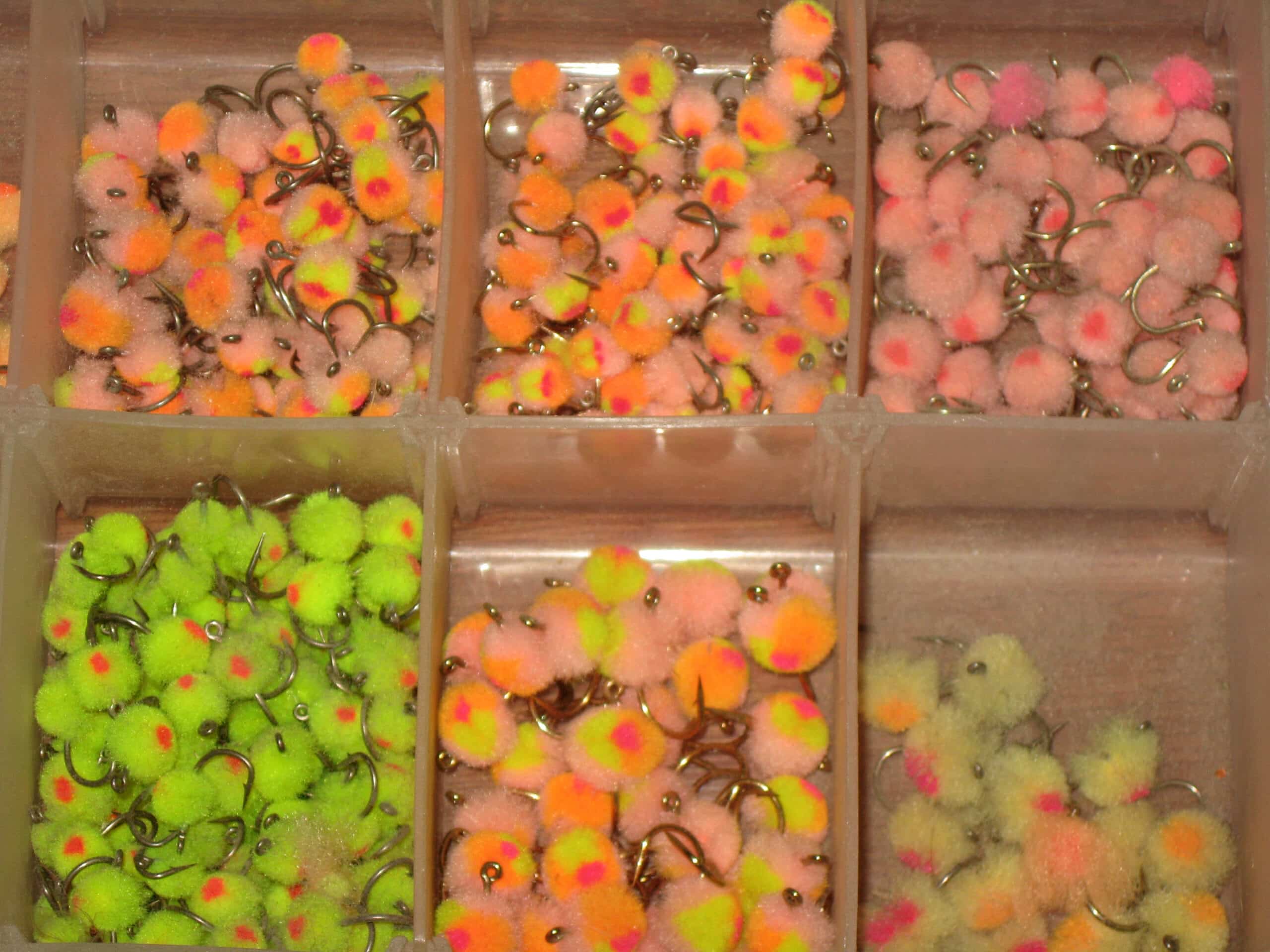This post was last updated on August 29th, 2021 at 09:51 am
There are a lot of egg fly patterns and materials that you can use to tie up fantastic looking egg patterns with. Today I will go over some materials needed and a quick demo on how to tie the standard yarn egg fly pattern. Whether you are fishing for salmon in the fall, spring steelhead or even spawning cutthroat and brown trout, you will find patterns here that will work well for you. There are a lot of instances where egg patterns are a hot commodity, but you won’t have to worry—they are easy to tie.
Instances Where Egg Patterns Rule:
- Steelhead Spawning Season: Steelhead like any other fish will fight for their chance to reproduce. While I don’t advise casting at spawning steelhead, but the fish below them (downstream) are fair game. They are only there to eat loose eggs from competitors and deserve to be caught.
- Trout Fishing: Whether we are talking spring cutties or spawning fall brown trout situations, they are all susceptible to egg flies. Fish are always out to eat eggs because they are loaded with nutritional value and are an extremely easy target. Browns will stack up downstream of rainbows in the spring and rainbows will do the same in the fall during the browns spawning session in the fall. You like eggs, I like eggs, trout do as well- bigtime!
- Salmon Fishing: Most salmon after entering the rivers are not particularly hungry, but one thing they will not tolerate is the thought (or instinct) of another fishes offspring being born and competing with their own. If there is any fly that most salmon are likely to eat, it is the almighty egg fly pattern. Exploit it.
Fish of all species will gorge on eggs for a lot of various reasons and we can take advantage of that. I have seen dozens of trout sitting behind spawning fish eating anything and everything that resembled an egg. The fact of the matter is these fish not only are susceptible to being caught easily, it is in your best interest to do so. Although I am not one to fight the facts of the evolutionary process, I don’t feel too bad burying a hook in a fish that is positioned in a spot only to eat the offspring of another trout.
Tying Egg Flies
Egg flies can be tied in a variety of different ways. In the following example I will use yarn, but there are many other ways to tie them. A number of times I have used a technique where heating up the hook and impaling beads on them has made almost instant egg flies (They look freaking good too!). If you are in close proximity to a store that sells beads, you might consider it. The main issue I have with this strategy is the hardness of the bead and the fishes propensity to spit it quickly. It also tends to cause less hooked fish (I have no evidence of this-but it makes sense) because the bead will bounce off flesh instead of suppressing and making the hook impale in the fishes mouth.
How To Tie Eggs With Yarn
In this demo I am using Glow Yarn but all brands of egg yarn can be used successfully in this same manner.
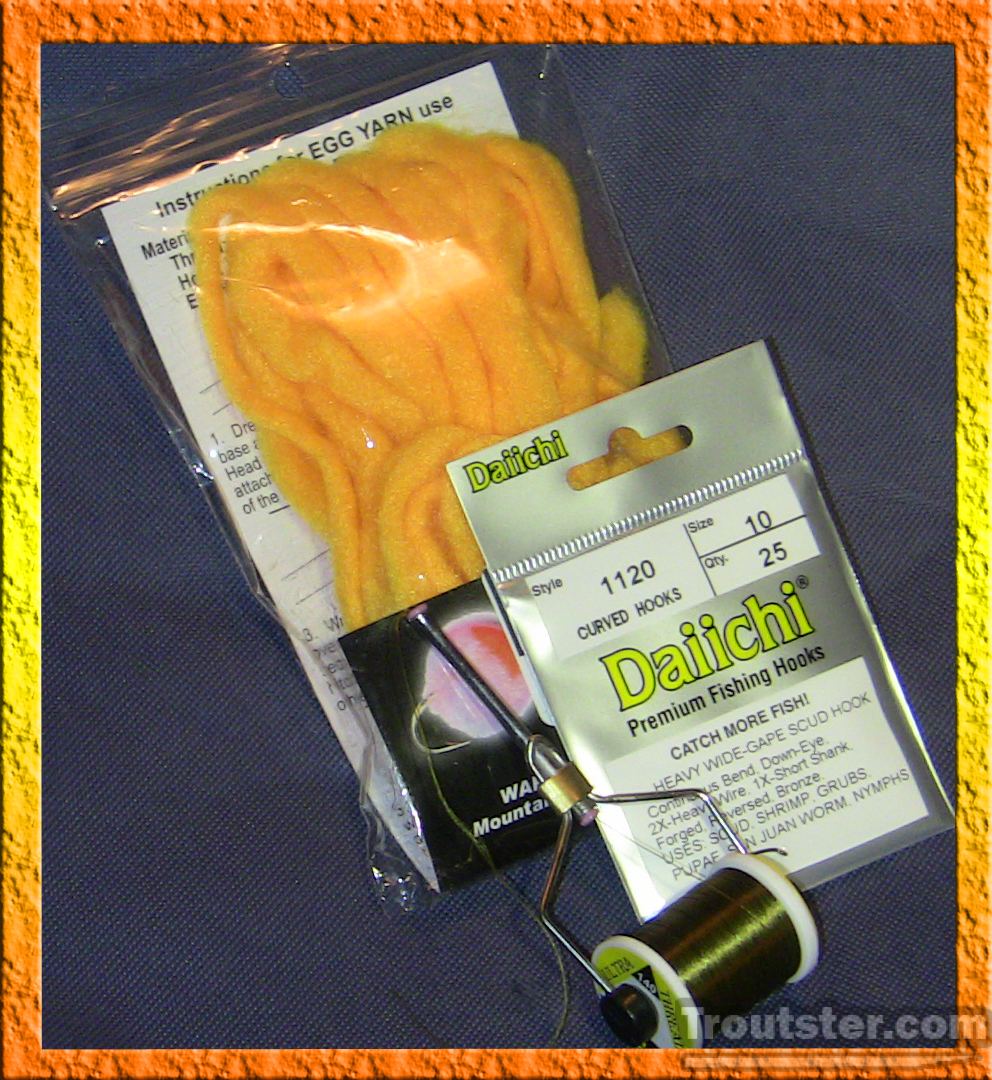
Materials I am Using in this Demo:
- Peach colored egg yarn
- Daiichi #1120 heavy wide gap scud hooks in size 10
- Olive colored thread (Red or orange thread would have been better).
Be sure you use the strongest thread you have in your stash, because you will really need to pull hard to get the yarn to flare properly. It is actually a lot like stacking deer hair. Personally I would have liked to have had a lot stronger thread when I was making the following egg fly pattern, but this is the strongest I had at the time. These hooks are a little big to simulate trout eggs, but they are a good size to represent salmon eggs, but they will certainly work well to catch steelhead and trout. This color of yarn has always been my personal favorite color for steelhead fishing.
Step #1). Find the center of your egg hook and tie several wraps of your thread. If you really want this fly to be bullet proof, you can dab a little head cement on the wraps.
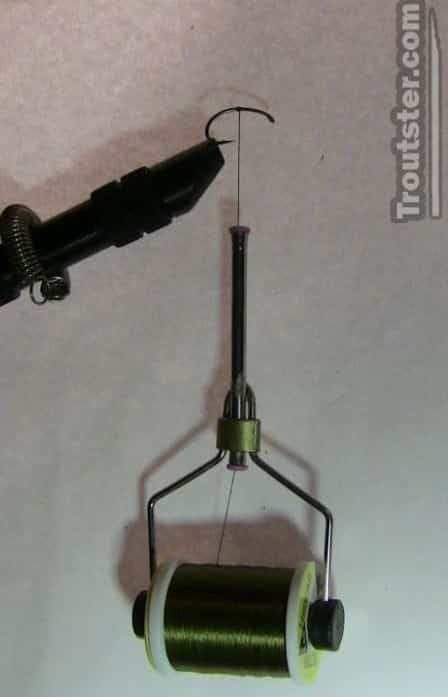
Step #2). Cut 3 pieces of yarn about one inch or so long and lay them on the hook.
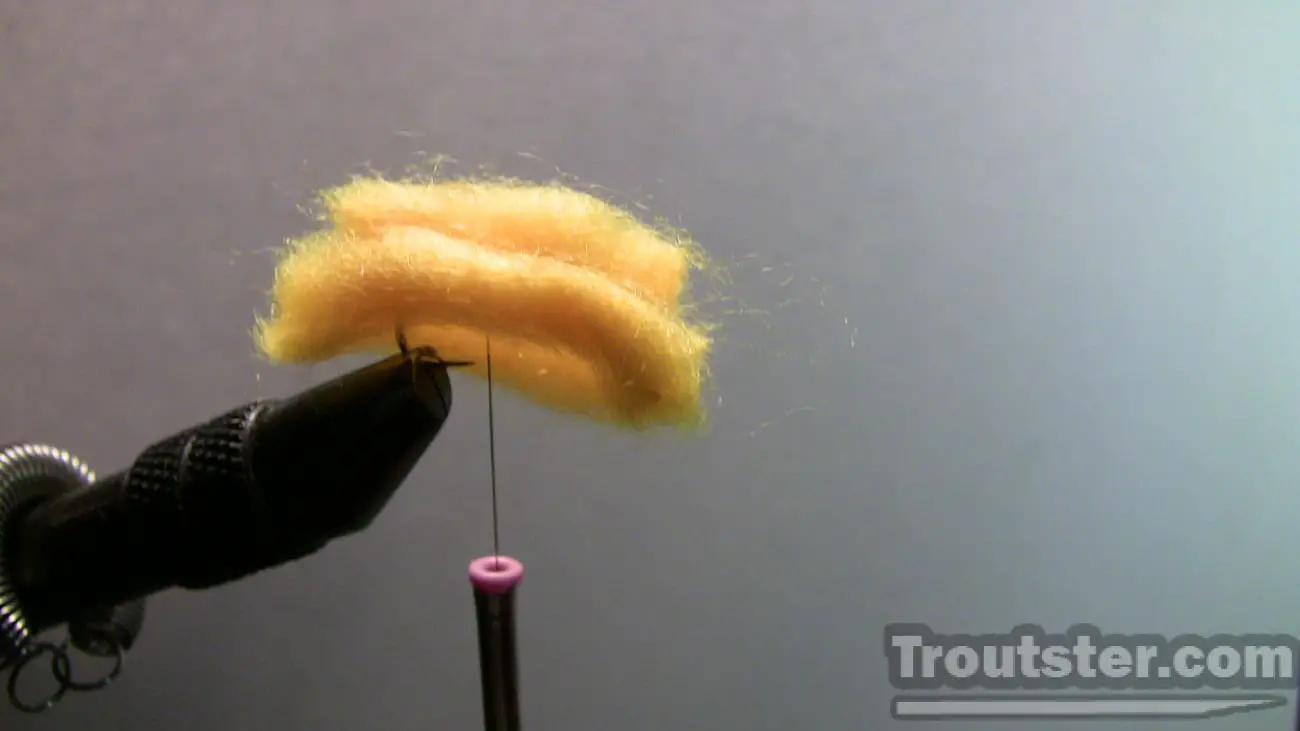
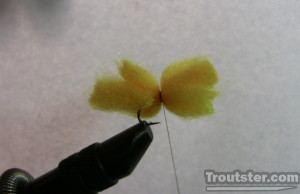
Step #3). Bring your thread towards the eye of the hook and tie it off. After a couple half hitches or a whip finish, we almost have a finished egg pattern.
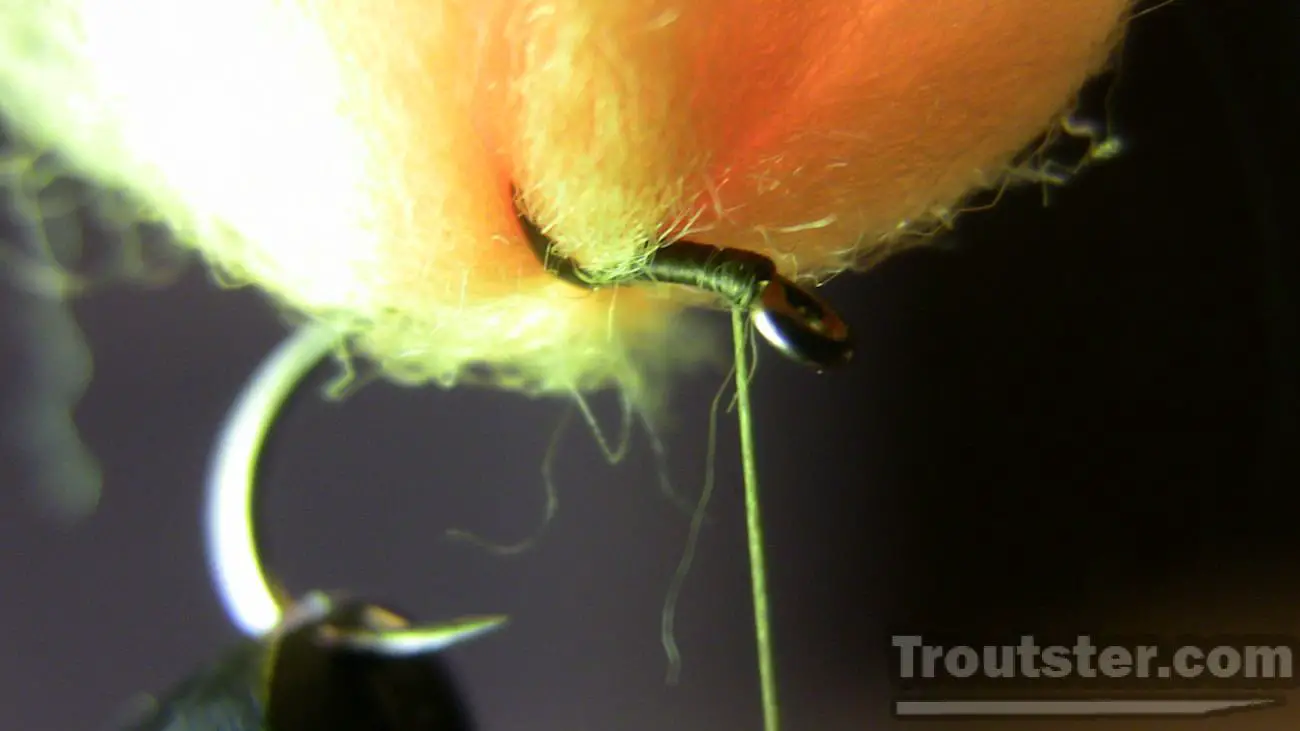
Step #4. Bring all of the egg yarn to the top part of the fly and give it a little twist. Cut it evenly right across the top and trim off any long pieces left over after the initial cut.
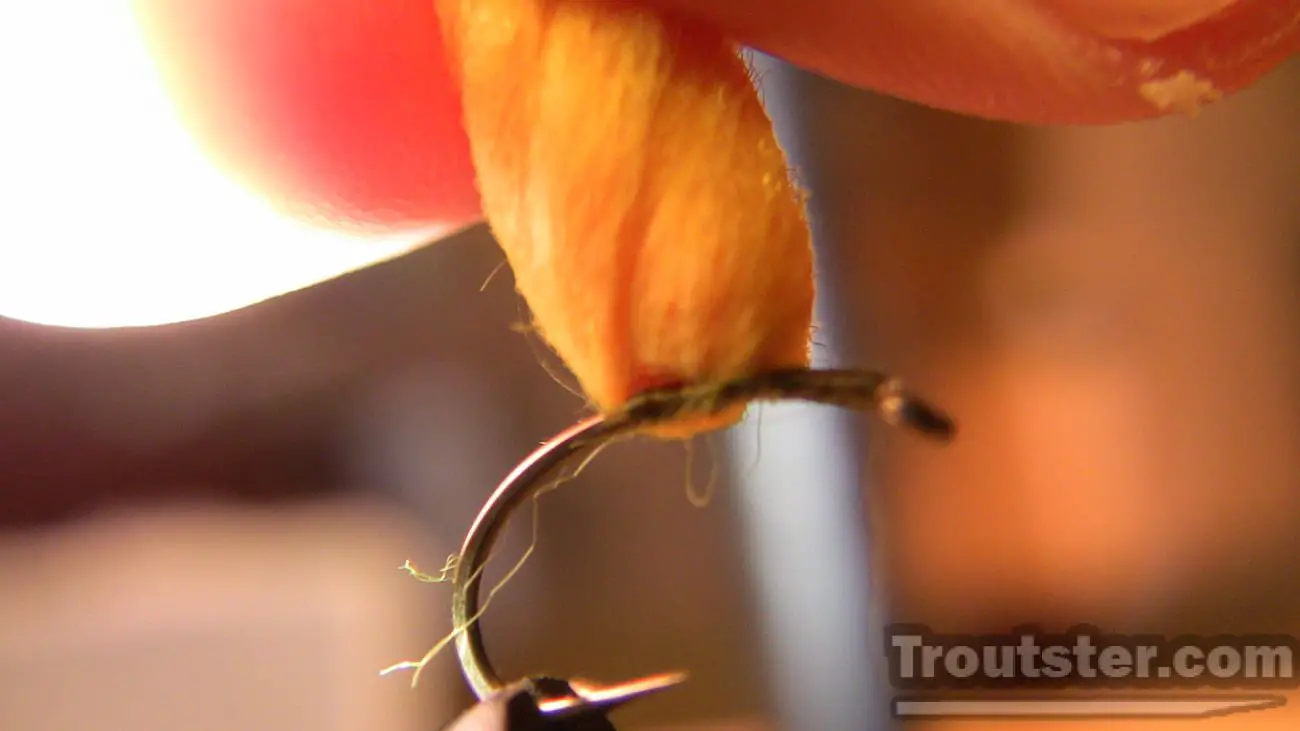
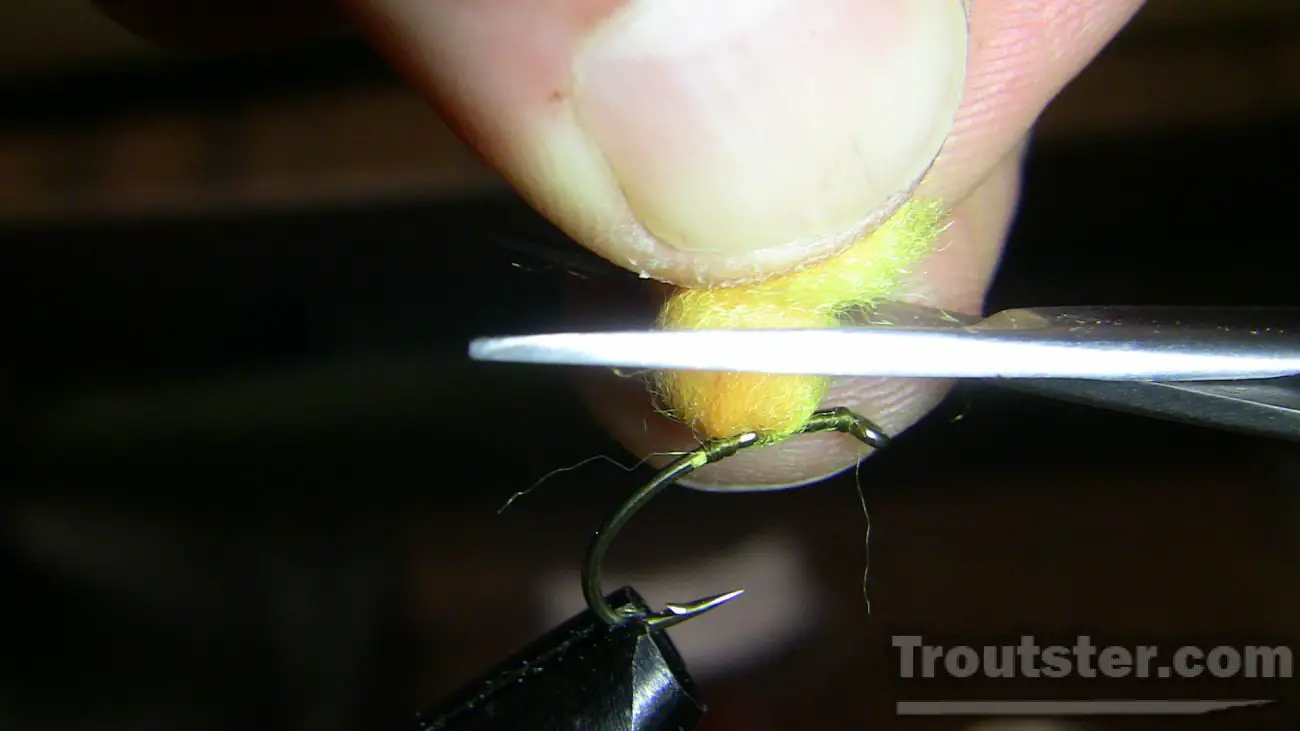
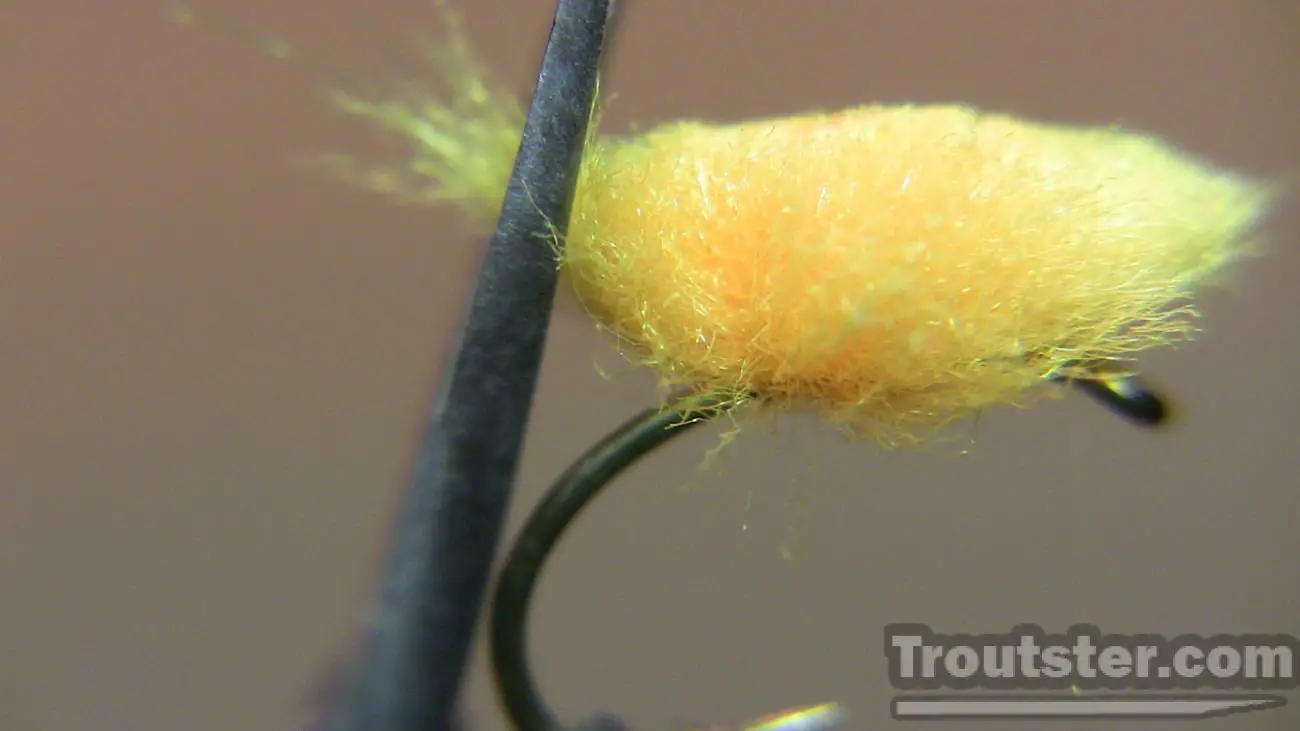
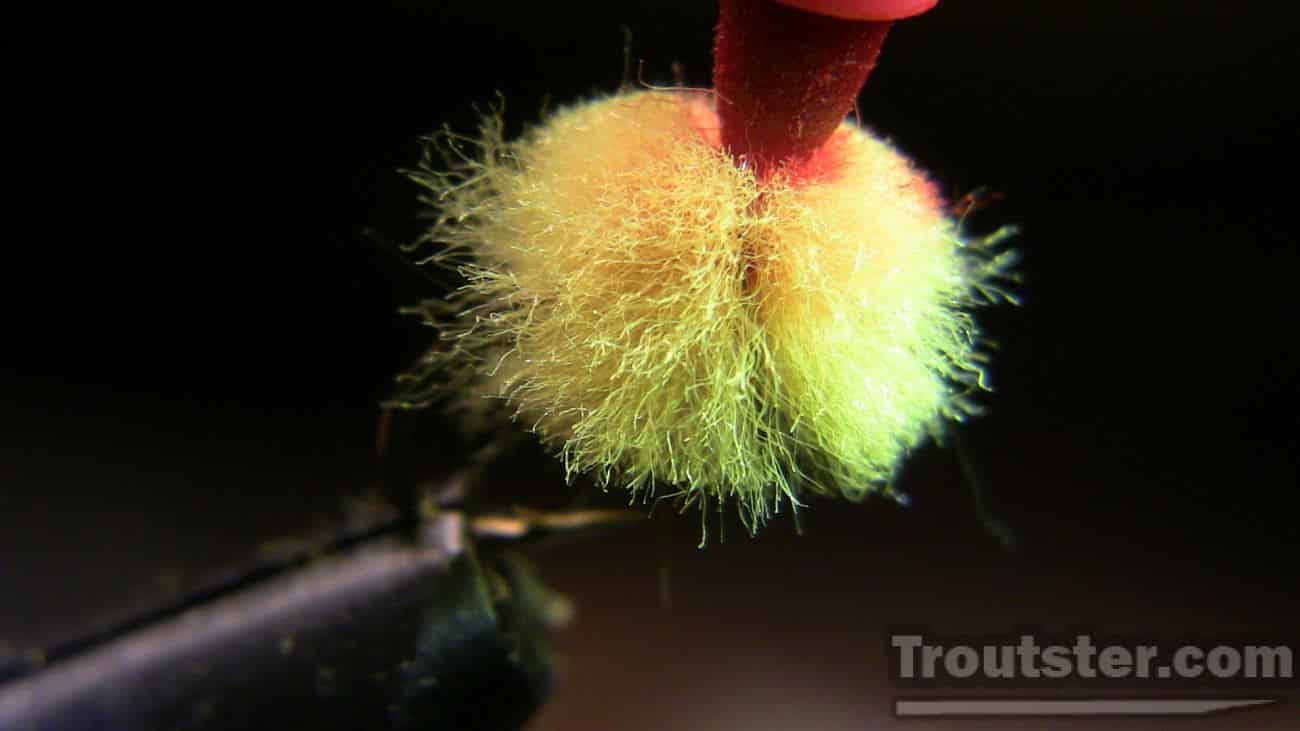
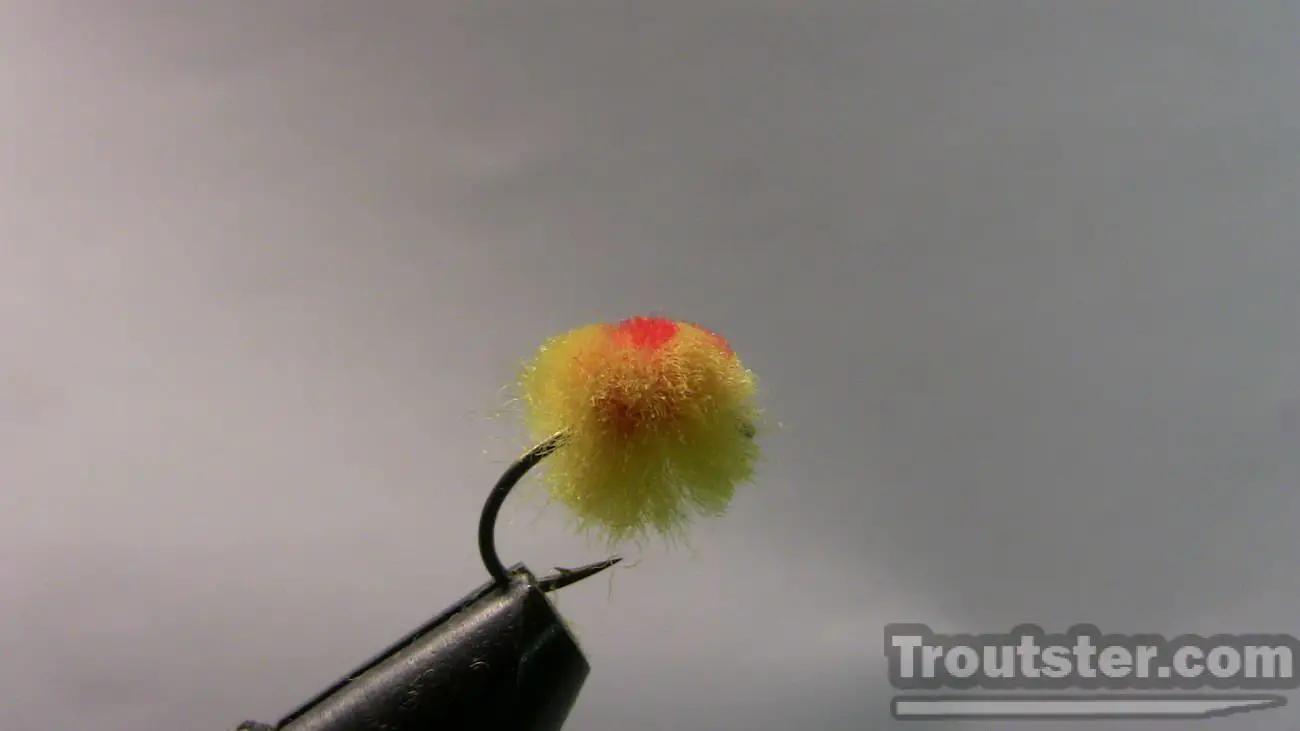
The Final Product – Egg Pattern Flies
You should be able to crank one of these egg fly patterns out in under 1 minute with very little practice. There is almost no reason to go into a fly shop and spend $1.00 or more on egg patterns, when they can be tied so easily and quickly with just a couple materials. So next time you find yourself glaring over egg flies at the shop, pass them up and buy the materials to make your own egg patterns!

